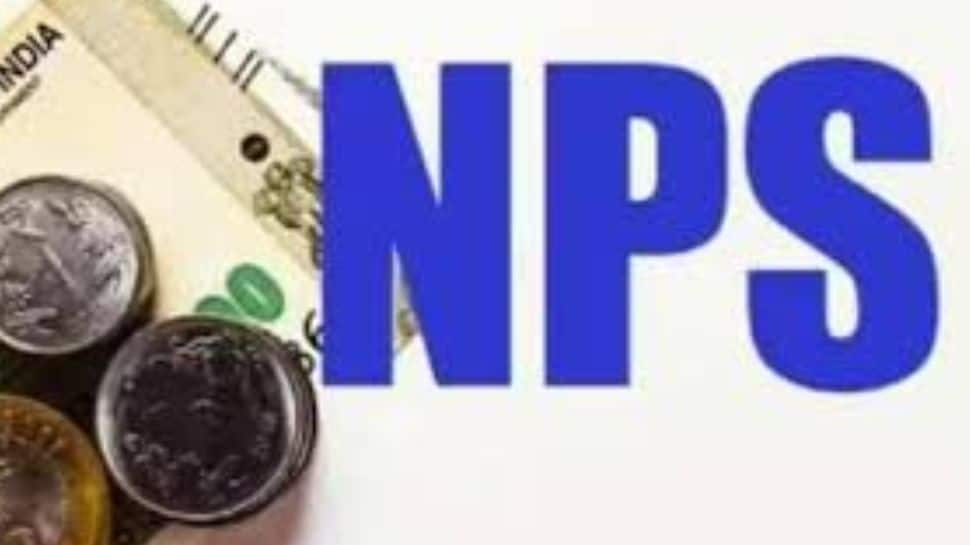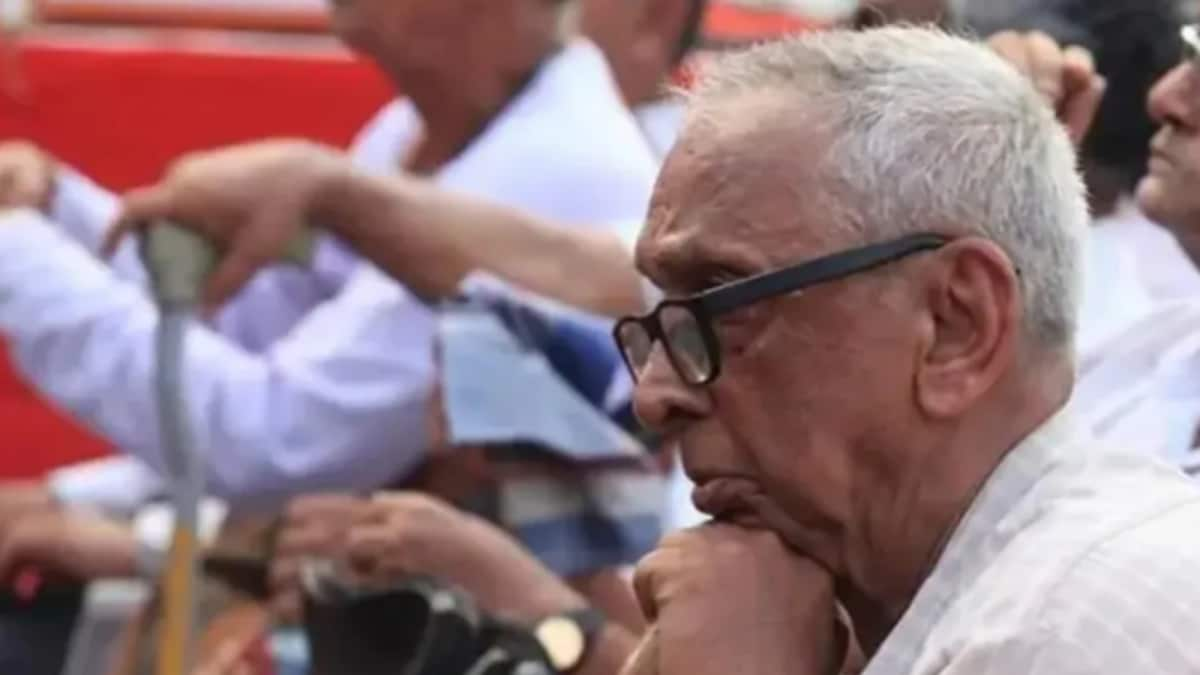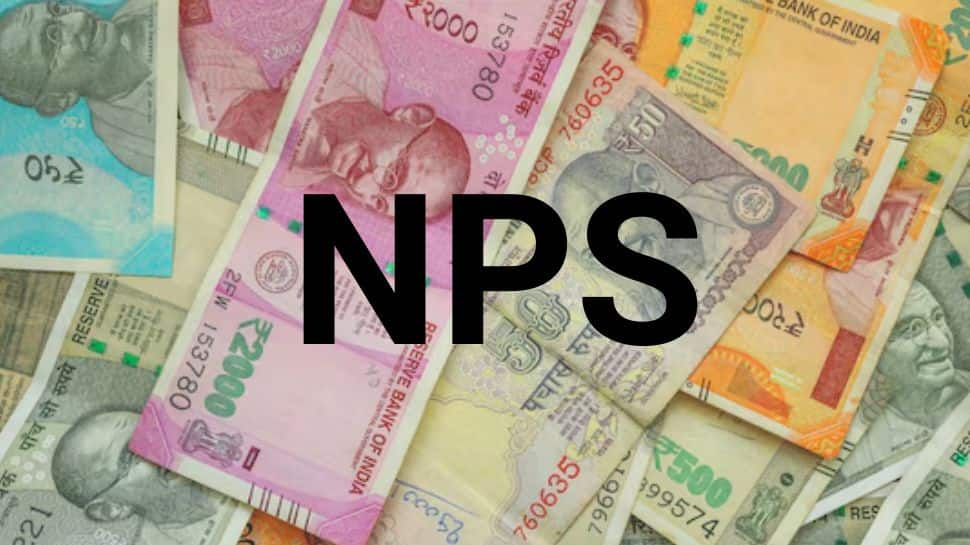Business
Want To Switch From UPS To NPS? Here’s How You Can Do It; Deadline Is….

New Delhi: The Government of India has rolled out new rules for the Unified Pension Scheme (UPS). This gives central government employees an option to switch under the National Pension System (NPS). Effective from April 1, 2025, the scheme ensures employees get an assured payout after retirement, offering more security for their post-retirement years.
The Finance Ministry has announced that September 30, 2025 will be the last date for eligible employees and retirees under NPS to switch to the Unified Pension Scheme (UPS). After this deadline, those who decide to continue with NPS will not be allowed to shift to UPS later.
Unified Pension Scheme (UPS) Explained
The Unified Pension Scheme (UPS) is a new option introduced under the National Pension System (NPS) for central government employees. It gives them the benefit of an assured payout after retirement, ensuring financial stability in their later years. The scheme officially came into effect on April 1, 2025. (Also Read: Hurry! Only 10 Days Left To File ITR—Check If You Have Filed It Correctly)
UPS vs NPS: Key Differences
While NPS returns can fluctuate with the market, UPS carries low risk since the pension is guaranteed. Under UPS, employees get a minimum assured pension of Rs 10,000 per month after completing 10 years of service, regardless of market performance. (Also Read: Neutral On Indian Equities, GST Reforms To Boost Consumption: Report)
Who Can Opt for UPS?
Only central government employees currently enrolled under NPS can apply for the Unified Pension Scheme (UPS). To be eligible, you must:
– Be a serving central government employee as of April 1, 2025
– Already be registered under the NPS
– Wish to shift to the new UPS for assured pension payouts
How to Switch from NPS to UPS (Online Process)
Step 1: Visit the eNPS Portal
– Go to: eNPS Portal
– Select “NPS to UPS Migration” under the Unified Pension Scheme section
Step 2: Enter Your Details
– Enter your PRAN (Permanent Retirement Account Number)
– Enter your Date of Birth
– Fill in the Captcha and click “Verify PRAN”
Step 3: OTP Verification
– An OTP will be sent to your registered mobile number or email ID
– Enter the OTP to continue
Step 4: Accept the Declaration
– A declaration window will appear
– Tick the acceptance box and click “Proceed to e-Sign”
– Note: Once submitted, this choice is final and cannot be changed
Step 5: e-Sign Using Aadhaar
– Enter your Aadhaar number or Virtual ID (VID)
– Click “Send OTP”
– Enter the OTP received on your Aadhaar-linked mobile number and click “Verify OTP”
Step 6: Get Confirmation
– Your migration request will be submitted
– An Acknowledgement Number will be generated
– Download the e-signed migration form for your records//
Offline Option to Apply for UPS
If you prefer the offline route, you can also apply for UPS through forms. Here’s how:
Download the Form: Get Form A2 from NSDL UPS Portal. (Form A1/A2 may be used depending on eligibility.)
Submit the Form: Fill it and get it verified by your Head of Office.
Approval Process: The form is then routed through the DDO → PAO/CDDO → Central Recordkeeping Agency (CRA).
PRAN Allocation: The CRA will generate your Permanent Retirement Account Number (PRAN).
First Contribution: Your first contribution must be credited within 20 days of application or joining date.
Family Pension Under UPS
If the pension holder passes away after retirement, the legally wedded spouse will receive a family pension equal to 60 per cent of the payout that the pension holder was getting just before their demise. This applies to the spouse who was legally married at the time of retirement (whether superannuation, voluntary retirement, or retirement under FR 56(j)).
Business
Hitting The ‘High Notes’ In Ties: Nepal Set To Lift Ban On Indian Bills Above ₹100

Last Updated:
The move is expected to provide an immediate and substantial boost to Nepal’s economy, particularly its tourism and hospitality sectors, which rely heavily on Indian visitors

The original restrictions on high-value Indian currency were severely tightened in Nepal following the 2016 demonetisation in India, which withdrew old ₹500 and ₹1,000 notes. Representational image
Nepal is preparing to officially permit the circulation of Indian currency notes above the ₹100 denomination, marking the end of a nearly decade-long ban that has significantly complicated cross-border travel, trade, and remittances between the two countries. The move, currently in its final stages with the Nepal Rastra Bank (NRB) preparing to publish the official notice, follows a crucial regulatory shift by India’s central bank.
The original restrictions on high-value Indian currency were severely tightened in Nepal following the 2016 demonetisation in India, which withdrew old ₹500 and ₹1,000 notes. Even after new notes were introduced, Nepal maintained the ban on all denominations above ₹100 due to concerns over the smuggling of counterfeit currency and security risks. This policy forced Indian tourists and Nepali migrant workers to carry large wads of low-denomination notes, leading to financial hardship, confusion, and frequent incidents of travellers being detained or fined for inadvertent violations.
India’s Regulatory Green Light
The pivotal change that has allowed Nepal to reverse course came from the Reserve Bank of India (RBI). In late November 2025, the RBI amended its Foreign Exchange Management Regulations, formally allowing individuals to transport higher-denomination Indian rupee notes across the border.
The new rule specifies that individuals can carry Indian currency notes of any amount in denominations up to ₹100. Crucially, they are now permitted to carry notes above ₹100 up to a total value of ₹25,000 in either direction—both into Nepal and back into India. This amendment effectively removed the main legal constraint that previously limited the practical utility of higher-value notes for travellers.
Boosting Tourism and Easing Remittances
The lifting of the ban is expected to provide an immediate and substantial boost to Nepal’s economy, particularly its tourism and hospitality sectors, which rely heavily on Indian visitors. Businesses in border towns, casinos, and pilgrimage routes that cater to Indian tourists have been vocal in lobbying for this change, as the previous restrictions limited spending power.
Furthermore, the decision is a massive relief for the estimated two million Nepali migrant workers in India, who previously faced major security risks when bringing home their earnings in small denominations. The Nepal Rastra Bank (NRB) spokesperson, Guru Prasad Poudel, confirmed that the process is nearing completion, stating they are preparing to publish the notice in the Nepal Gazette before issuing circulars to banks and financial institutions, ushering in a new era of smoother financial integration between the two neighbours.
December 14, 2025, 01:21 IST
Read More
Business
8th Pay Commission: Railways to trim costs to accommodate higher wages; maintenance, procurement, energy sectors in focus – The Times of India

Railways is implementing focused cost-cutting initiatives across maintenance, procurement and energy sectors to fortify its financial position before dealing with increased wage expenses anticipated from the Eighth Pay Commission recommendations.Established in January 2024, the Eighth Pay Commission must submit its recommendations within an 18-month timeframe.The previous Seventh Pay Commission led to wage increases of 14-26% for railway staff. Its implementation began in 2016, with tenure concluding in January 2026. The national transporter is currently emphasising expense reduction to enhance operational efficiency over the next two years to prevent financial strain from the forthcoming recommendations.The Seventh Pay Commission increased the wage expenditure by Rs 22,000 crore, including salaries and pensions, whilst the current projection suggests a potential rise of Rs 30,000 crore. “We have planned for the additional fund requirement,” a senior official told Economic Times, stating that internal accruals, combined with projected savings and increased freight revenue, would cover the expenses.Indian Railways recorded an operating ratio (OR) of 98.90% in fiscal 2024-25, resulting in net revenue of Rs 1,341.31 crore. For fiscal 2025-26, the target OR is 98.43% with anticipated net revenue of Rs 3041.31 crore.Officials anticipate annual energy savings of Rs 5,000 crore following network electrification completion.Additionally, yearly payments to Indian Railway Finance Corporation (IRFC) are expected to decrease in fiscal 2027-28, as recent capital expenditure has been funded through gross budgetary support (GBS).Officials confirm no plans for new short-term borrowing. “Annual freight earnings will also rise by Rs 15,000 crore when higher wages need to be paid in 2027-28,” the official stated.The Seventh Pay Commission implemented a 2.57 fitment factor, raising minimum basic pay from Rs 7,000 to Rs 17,990. Central trade unions advocate for a 2.86 fitment factor for the Eighth Pay Commission, potentially increasing the national transporter’s wage bill by over 22%.“Railways will ensure its finances are in a good condition to absorb the hit. Funds would not be an issue,” the official confirmed.The Railways has allocated Rs 1.28 lakh crore for staff costs in 2025-26, increased from Rs 1.17 lakh crore in 2024-25. Additionally, Rs 68,602.69 crore is earmarked for the pension fund in FY26, up from Rs 66,358.69 crore in FY25.
Business
Gold, Silver Prices Jump Sharply This Week; Yellow Metal Surges By Rs 4,000

New Delhi: Gold and silver prices witnessed a sharp surge in the domestic market this week, tracking strong gains in global bullion markets. Gold prices rose by around Rs 4,000 per 10 grams, while silver prices jumped by nearly Rs 17,000 per kilogram. According to data from the India Bullion and Jewellers Association (IBJA), the price of 24-karat gold increased by Rs 4,188 to Rs 1,32,710 per 10 grams, compared to Rs 1,28,592 a week ago.
The price of 22-karat gold climbed to Rs 1,21,562 per 10 grams from Rs 1,17,777, while 18-karat gold rose to Rs 99,533 per 10 grams from Rs 96,444. Silver prices outperformed gold, registering a sharper weekly rise. The price of silver surged by Rs 16,970 to Rs 1,95,180 per kilogram, up from Rs 1,78,210 per kilogram a week earlier.
Earlier on Friday, Silver touched the Rs 2 lakh mark to hit an all-time high of Rs 2,013,88 per kilogram on the Multi-Commodity Exchange (MCX) during the intraday trade. The price of the future contract expiring on March 5, 2026, rose over Rs 2,400 during the day before settling at Rs 2,00462, up Rs 1,520 against the previous session’s closing of Rs 1,98,942.
“Gold and silver ETFs have been quiet heroes of the year, delivering standout returns even as equity markets saw bouts of volatility. Silver, especially, stole the spotlight — a rare combination of booming industrial demand from solar, EVs and electronics, alongside tightening global supply, pushed prices sharply higher,” said Nikunj Saraf, CEO, Choice Wealth.
Gold too held its ground and climbed steadily, supported by persistent central-bank buying and investors seeking safety amid geopolitical and inflation worries, he added. The gold future contract expiring on February 5 surged 1.87 per cent to close at Rs 1,34,948 per 10 grams on MCX on Friday. In the retail market, the 24-carat gold price settled at Rs 132,710 per 10 grams, up over Rs 4,600 from the previous day’s closing of Rs 1,28,596 per 10 grams, according to the IBJA.
The rally in domestic bullion prices is largely driven by continued strength in international markets, with both precious metals hovering close to their all-time highs. On the COMEX, gold was trading at $4,328 per ounce, while silver stood at $62 per ounce.
-

 Politics6 days ago
Politics6 days agoThailand launches air strikes against Cambodian military: army
-

 Tech1 week ago
Tech1 week agoWIRED Roundup: DOGE Isn’t Dead, Facebook Dating Is Real, and Amazon’s AI Ambitions
-

 Politics6 days ago
Politics6 days agoZelenskiy says Ukraine’s peace talks with US constructive but not easy
-

 Sports1 week ago
Sports1 week agoAustralia take control of second Ashes Test | The Express Tribune
-

 Fashion6 days ago
Fashion6 days agoGermany’s LuxExperience appoints Francis Belin as new CEO of Mytheresa
-

 Business1 week ago
Business1 week agoNetflix to buy Warner Bros. film and streaming assets in $72 billion deal
-

 Politics7 days ago
Politics7 days ago17 found dead in migrant vessel off Crete: coastguard
-

 Tech1 week ago
Tech1 week agoMIT researchers “speak objects into existence” using AI and robotics










